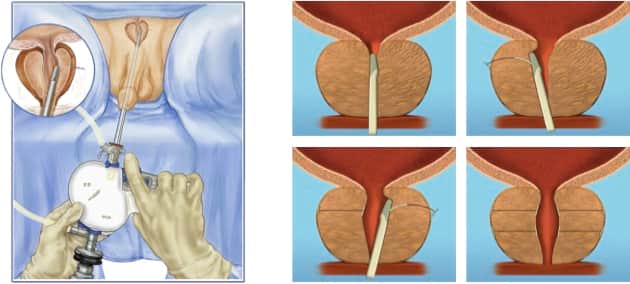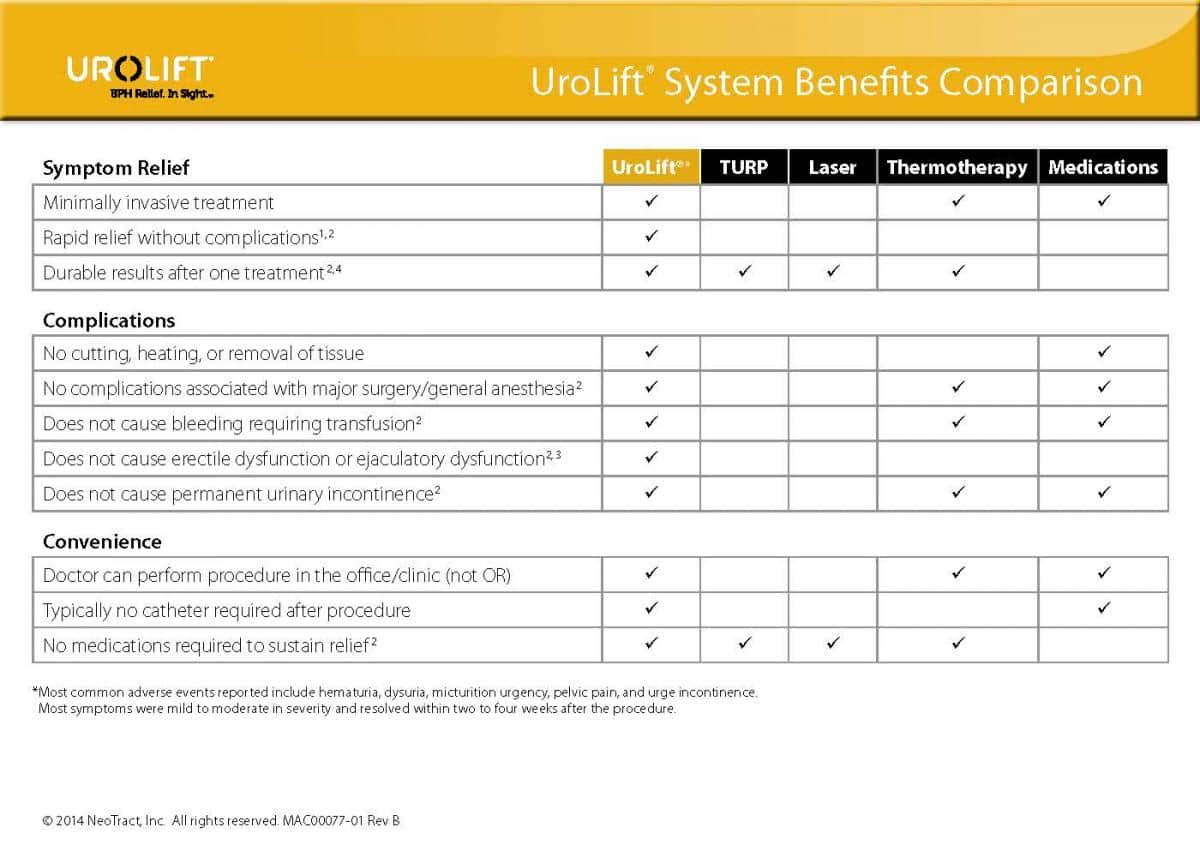What is a Urolift Procedure?
The UroLift procedure is a revolutionary treatment that provides rapid and durable relief from the bothersome urinary symptoms associated with benign prostatic hyperplasia (BPH). Clinically proven to be safe and effective, the UroLift procedure can improve symptoms 3 to 4 times greater than with medication and patients can return to normal activity in a few days.
Studies have shown that the Urolift procedure does not appear to cause erectile problems (impotence), ejaculatory problems (retrograde ejaculation), or permanent urinary incontinence. Recovery is faster than traditional surgical approaches.
Why do I need a Urolift Procedure?
I may recommend this procedure if you have an enlarged prostate gland causing obstruction to the flow of urine.
How is it performed?

The Urolift procedure is usually performed as day surgery. The operation involves passing a telescope up the urethra and placing small, permanent implants into the prostate to lift and hold the enlarged tissue out of the way, relieving pressure on the urethra and allowing urine to flow. There is no cutting, heating, or removal of prostate tissue required which means a minimally invasive, straightforward procedure and less downtime for patients. After the procedure, you will recover from the general anaesthetic and you should be able to empty your bladder before you go home. However, 20% of men, usually those with very large prostates, may need a temporary catheter after surgery and will be often be admitted overnight until the catheter can be removed.
What are the complications associated with having a Urolift Procedure?
Most procedures are straightforward; however as with any surgical procedure there is a chance of side effects or complications. Most of these side effects are often mild and transient.
Common
- Mild to moderate bleeding or burning sensation on passing urine for a short time after the procedure (usually resolves by 2 weeks).
Occasional
- Temporary insertion of a catheter (tube passed through the urethra to empty your bladder) after the procedure.
- Urine infection requiring antibiotics.
- Failure to improve some are all of your urinary symptoms which may need consideration alternative treatments which could include further surgery.
Rare
- Delayed bleeding requiring removal of clots or further surgery.
- Injury to urethra causing delayed scar formation (urethral stricture).
- Formation of stones in the bladder (2%).
Alternatives to Urolift Procedure
The Urolift is a minimally invasive safe treatment for urinary symptoms caused by an enlarged prostate gland. However, it may not be suitable for every case.
The alternatives are:
- Medication (alpha blocker, Proscar, Duodart).
- Laser Prostatectomy
- Transurethral Resection of Prostate (TURP)
- Open prostate operation (for very large prostates >100cc)
- Rezuum
- Prostatic arterial embolisation
- Observation of symptoms.
- Long-term catheter.

Disclaimer
This information is intended as a general educational guide and may not apply to your situation. You must not rely on this information as an alternative to consultation with your urologist or other health professional.
Not all potential complications are listed, and you must talk to your urologist about the complications specific to your situation.
